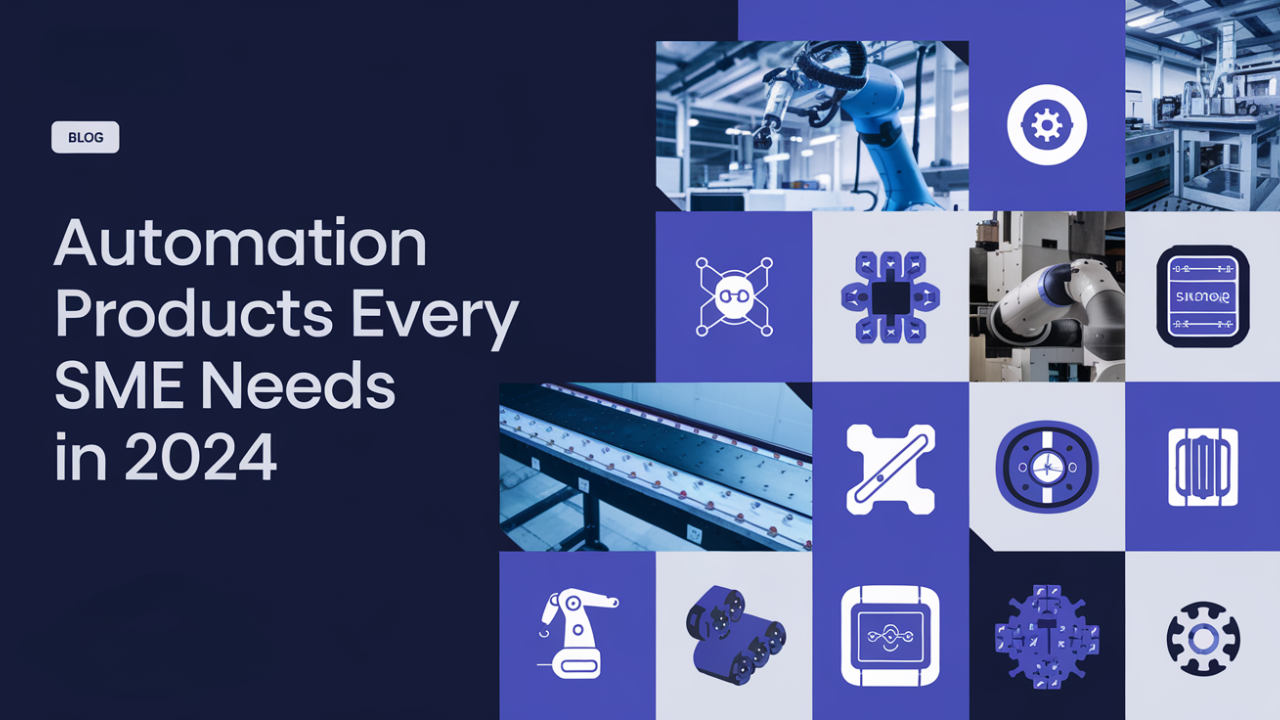Introduction
In the contemporary business environment, small and medium-sized enterprises (SMEs) are increasingly acknowledging the critical role of automation. Automation not only enhances operational efficiency but also reduces costs and improves scalability, thereby enabling SMEs to compete effectively within a crowded marketplace. As we approach 2024, several trends are shaping the landscape of SME automation, making it imperative for businesses to adopt the appropriate tools to thrive.
1. Why SMEs Need Automation in 2024
Increasing Competition and Demand for Efficiency
The rise in competition necessitates that SMEs streamline their operations to maintain relevance. Automation provides essential tools that enhance productivity, allowing businesses to deliver faster and more reliable services.The Rise of Remote Work and Hybrid Setups
The transition towards remote work has further underscored the importance of automation. Automated systems facilitate seamless communication and collaboration among teams, irrespective of their physical locations.Enhancing Customer Experience
Today’s customers expect prompt responses and personalized services. Automation tools, such as AI-powered chatbots, enable SMEs to meet these expectations by providing immediate assistance and tailored interactions.Cost and Time Savings
By automating routine tasks, SMEs can achieve significant time and resource savings. This allows them to concentrate on growth strategies rather than becoming encumbered by administrative duties.
2. Key Areas of Automation for SMEs
- Marketing and Sales: The implementation of Customer Relationship Management (CRM) tools, email automation, and social media management platforms can streamline marketing efforts.
- Customer Support: AI-powered chatbots, ticketing systems, and call center automation enhance the efficiency of customer service operations.
- Accounting and Finance: Tools for invoice generation, expense tracking, and payroll automation simplify financial management processes.
- Operations and Inventory Management: Automated stock management systems and supply chain automation improve operational efficiency.
- HR and Employee Management: Onboarding tools, attendance tracking systems, and payroll solutions optimize human resources processes.
3. Must-Have Automation Products for SMEs in 2024
Marketing Tools
- HubSpot: An all-encompassing marketing platform that offers tools for email marketing, social media management, and analytics.
- Mailchimp: A user-friendly tool designed for automating email campaigns and managing social media outreach.
Customer Support Tools
- Zendesk: A comprehensive support ticket management system that streamlines customer inquiries.
- navAI Chatbots: AI-driven conversational tools specifically designed for SMEs to enhance customer interaction.
Finance Tools
- QuickBooks: A solution that simplifies accounting tasks with features for invoicing, expense tracking, and financial reporting.
- Xero: An ideal platform for managing finances with an easy-to-use interface tailored for small businesses.
HR Tools
- BambooHR: A tool that streamlines HR processes including employee data management and performance tracking.
- Gusto: A comprehensive payroll solution that also addresses HR needs for small teams.
Operations Tools
- Monday.com: A project management tool that facilitates team collaboration through customizable workflows.
- Zoho Inventory: A solution that simplifies inventory management with features for order tracking and stock control.
4. Emerging Trends in Automation for SMEs
- Integration of AI: The utilization of predictive analytics and customer insights through AI enhances decision-making capabilities.
- Low-code/No-code Platforms: These platforms empower non-technical teams to create automated workflows without extensive coding knowledge.
- Voice-based Automation Tools: Voice recognition technology is increasingly being integrated into business operations.
- API Integrations: Seamless connectivity between various automation tools enhances overall functionality.
- Sustainability-focused Tools: Automation solutions aimed at energy management are gaining traction as businesses prioritize sustainability initiatives.
5. How to Choose the Right Automation Tools
When selecting automation tools, SMEs should consider the following criteria:
- Evaluate specific business needs and goals to ensure alignment with chosen tools.
- Consider budget constraints while seeking scalable solutions that can grow with the business.
- Assess integration capabilities with existing software to avoid operational silos.
- Look for user-friendly interfaces that require minimal training for staff members.
- Prioritize vendors that offer robust customer support and regular updates to their products.
6. Implementation Tips for Automation in SMEs
To successfully implement automation within an SME:
- Begin with a small-scale approach by automating one or two processes before expanding further.
- Provide comprehensive training sessions for employees on new tools to ensure smooth transitions.
- Regularly monitor the performance of automation tools to measure return on investment (ROI).
- Continuously update and optimize processes based on feedback from users and evolving business needs.
Conclusion
As we look forward to 2024, the significance of automation in driving SME growth cannot be overstated. By adopting tailored automation products, businesses can enhance efficiency, improve customer experiences, and ultimately position themselves for success in a competitive landscape. We encourage you to explore navAI for custom SME automation solutions that align with your unique business requirements.




